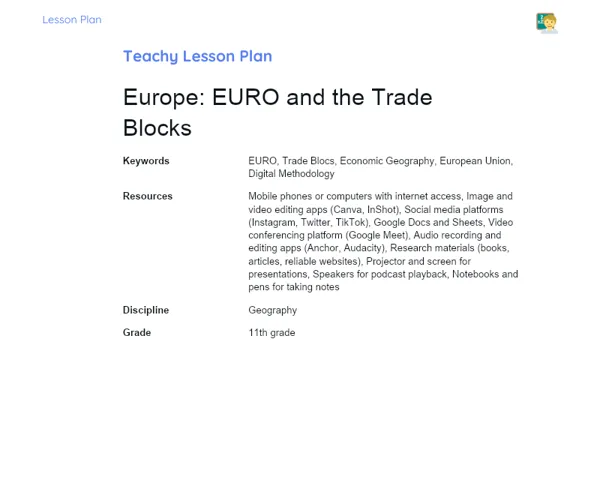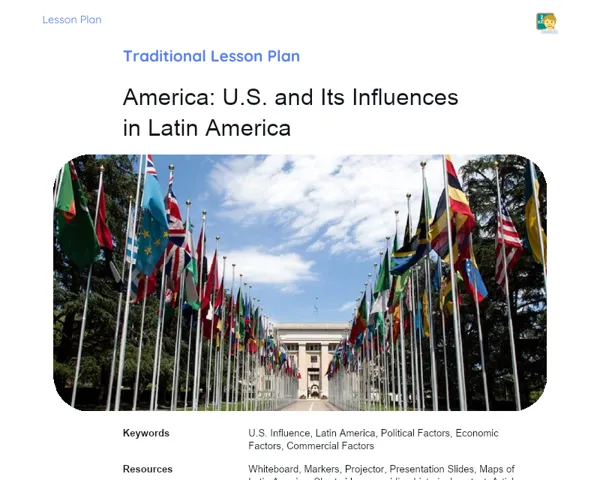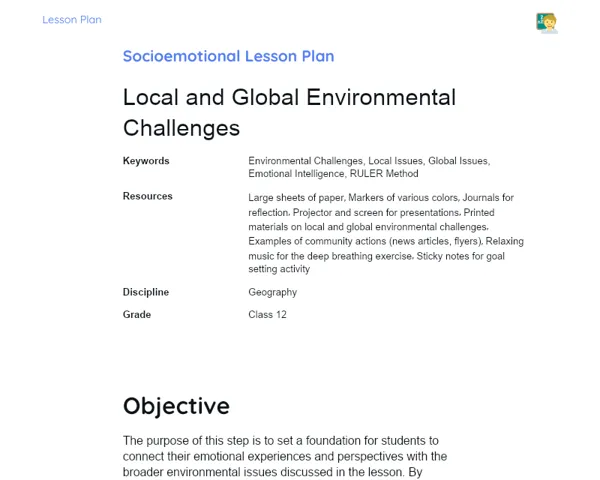Lesson Plan | Active Methodology | Soil: Main Types
| Keywords | Soil Types, Organic Matter, Minerals, Gases, Soil Fertility, Flipped Classroom, Hands-on Activities, Sample Collection, Mini-Ecosystems, Fertility Challenge, Geography Subject, 1st Year of High School |
| Necessary Materials | Collection kits (spades, gloves, sample bags), Materials for constructing mini-ecosystems (transparent containers, assorted soil types, plant seeds, stones, moss, small wood pieces), Reference materials on crop types and their soil requirements, Computer or interactive board for presentations, Paper and pens for notes, Access to a simulated botanical garden |
Premises: This Active Lesson Plan assumes: a 100-minute class duration, prior student study both with the Book and the beginning of Project development, and that only one activity (among the three suggested) will be chosen to be carried out during the class, as each activity is designed to take up a large part of the available time.
Objective
Duration: (5 - 10 minutes)
This objectives phase is vital for guiding and channeling student learning effectively. Clearly laying out the learning expectations helps students prepare well for practical classroom activities. It also aligns the expectations of both teachers and students, ensuring that classroom time is utilized efficiently and directed toward developing specific competencies related to the study of soils.
Objective Utama:
1. Enable students to identify and describe the key types of soil, including sandy, clayey, silty, and loamy soils, while highlighting their physical and chemical traits.
2. Enhance understanding of soil compositions, considering organic matter, minerals, and gases, and how these elements influence fertility and agricultural practices.
Objective Tambahan:
- Cultivate critical analysis skills through the comparison of various soil types and their characteristics.
Introduction
Duration: (15 - 20 minutes)
The introduction aims to engage students and connect their previous knowledge with real-life scenarios. By presenting real-world challenges, the introduction sparks curiosity and critical thinking, preparing them to apply soil type concepts meaningfully. Contextualization shows students the importance of studying soils in daily life, as well as in addressing environmental, agricultural, and urban challenges.
Problem-Based Situation
1. Imagine you are a farmer in an area with predominantly sandy soil. What challenges might you encounter while cultivating crops? Discuss possible methods to enhance the soil's fertility.
2. In a rapidly urbanizing city, many green spaces are being replaced with concrete structures. How can the change in soil type (from natural to compacted) impact water drainage during monsoon season? What environmental repercussions could arise?
Contextualization
Soil is the bedrock for sustaining plant life and, by extension, animal and human existence. Soil characteristics play a significant role in a region's capability to produce food and manage water resources. For instance, the process of desertification—driven by inadequate soil management practices—can convert fertile lands into deserts, leading to grave socioeconomic consequences. Understanding these contexts and challenges is crucial for making informed decisions in agriculture, urban planning, and environmental conservation.
Development
Duration: (75 - 80 minutes)
The development phase is designed for students to apply their learned knowledge about different soil types in practical and meaningful activities. Through engaging and contextualized tasks, they will explore, experiment, and analyze soil properties, reinforcing their learning while fostering critical observation and problem-solving abilities. The activities also promote teamwork and effective communication among students.
Activity Suggestions
It is recommended that only one of the suggested activities be carried out
Activity 1 - Expedition to the Botanical Garden
> Duration: (60 - 70 minutes)
- Objective: Identify and describe different soil types through practical observations and sample collection.
- Description: Students will form groups of up to 5 members, each simulating an expedition to a botanical garden to collect soil samples from various areas for analysis. Each group will receive a collection kit with tools such as spades, gloves, and sample bags. They should gather samples of sandy, clayey, silty, and loamy soils and record their observations regarding appearance, texture, and color.
- Instructions:
-
Divide the class into groups of up to 5 students.
-
Explain the characteristics of each soil type they should be observing.
-
Distribute the collection kits to each group.
-
Guide students to collect samples from at least 4 different areas of the simulated garden.
-
Instruct them to record their findings focusing on texture, color, and appearance.
-
Each group must prepare a small presentation of their results for the class.
Activity 2 - Ecosystem Builders
> Duration: (60 - 70 minutes)
- Objective: Utilize knowledge of soil types and their properties to create an environment conducive for plant growth.
- Description: In this activity, students will design and create mini-ecosystems in transparent containers using different soil types. Each group will receive common plant seeds and must select the most suitable soil type for the growth of each plant. They are encouraged to include elements like stones, moss, and small twigs to emulate a more natural environment.
- Instructions:
-
Organize students into groups of up to 5.
-
Provide necessary materials: clear containers, assorted soils, plant seeds, stones, moss, and twigs.
-
Discuss the properties of each soil type and the requirements of the plants.
-
Assist groups in selecting the correct soil type for each plant.
-
Supervise the creation of their mini-ecosystems.
-
Each group will explain their choices and the design aspects of their ecosystem.
Activity 3 - The Fertility Challenge
> Duration: (60 - 70 minutes)
- Objective: Enhance practical application skills using knowledge of soil types in agricultural decision-making.
- Description: Students will step into the shoes of agricultural consultants in groups, receiving details about a hypothetical farm, including soil composition in various zones and the types of crops the fictional farmer intends to plant. The challenge is to recommend the most suitable crops and soil management practices based on the soils' physical and chemical attributes.
- Instructions:
-
Divide the class into groups of up to 5 students.
-
Present the farm scenario along with the soil and desired crops information.
-
Provide reference materials about crop types and their soil requirements.
-
Guide students in analyzing the soil characteristics and selecting crops for each area.
-
Each group should prepare a recommendation report with justifications based on soil properties.
-
Each group will then present their recommendations to the class.
Feedback
Duration: (15 - 20 minutes)
This feedback phase is critical for solidifying student learning, allowing them to vocalize the knowledge they've acquired and reflect on the practical activities conducted. Group discussions give students the chance to articulate and share their findings, which not only reinforces individual understanding but also encourages a broader collective comprehension. Additionally, by responding to key questions, students are prompted to apply their knowledge to various scenarios, fostering critical thinking and contextualization skills.
Group Discussion
At the end of the activities, gather all the students for a group discussion. Begin with a short introduction, underscoring the importance of sharing each group's discoveries and experiences. Encourage every group to present a summary of their findings, focusing on the most interesting observations and lessons learned. This moment is an opportunity for students to ask questions and learn from each other, fostering an environment of shared knowledge and experiences.
Key Questions
1. What were the main differences you found among the various soil types throughout the activities?
2. How might the soil properties you observed influence plant growth and farming practices?
3. Are there any practical applications of what you've learned that could be relevant in other fields, such as urban planning or environmental conservation?
Conclusion
Duration: (5 - 10 minutes)
The conclusion phase is vital for consolidating learning, ensuring students have a clear and comprehensive understanding of the discussed topics. Summarizing the content aids in reinforcing their memory and understanding, while connecting theory with practice and discussing the topic's relevance strengthens the applicability of their knowledge. This phase also serves to underline the importance of studying soils and their practical implications, prepping students for future applications of the knowledge gained.
Summary
In conclusion, the teacher should summarize and revisit the main types of soil discussed in the lesson (sandy, clayey, silty, and loamy), emphasizing their physical and chemical characteristics. Key observations and conclusions drawn from the hands-on activities should be highlighted, reinforcing the significance of organic matter, minerals, and gases in soils.
Theory Connection
Today's lesson bridged theory and practice by enabling students to apply theoretical knowledge about soil types in practical contexts, such as collecting samples in a simulated botanical garden and constructing mini-ecosystems. This meaningful approach helped deepen students' understanding of how soil properties directly influence agriculture and the environment.
Closing
It is essential to stress the relevance of studying soils in daily life, whether for agriculture and food production, managing water resources, or urban planning. Knowing how to differentiate soil types empowers students to make informed decisions in diverse situations, which is crucial for developing engaged and responsible citizens.



